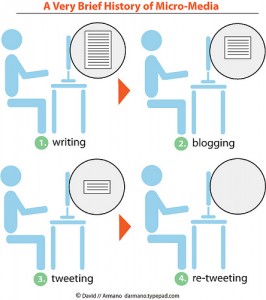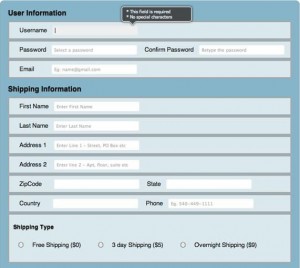 The famed retail pioneer from the late 19th century (and fellow Philadelphian) John Wanamaker reportedly said, “Half the money I spend on advertising is wasted; the trouble is I don’t know which half.” Marketers of all stripes wrung their hands while reluctantly accepting Wanamaker’s findings for nearly a century after his rise to success.
The famed retail pioneer from the late 19th century (and fellow Philadelphian) John Wanamaker reportedly said, “Half the money I spend on advertising is wasted; the trouble is I don’t know which half.” Marketers of all stripes wrung their hands while reluctantly accepting Wanamaker’s findings for nearly a century after his rise to success.
Marketing has come a long way since Wanamaker. With online advertising such as Google AdWords, all sorts of advanced bidding strategies and closed-loop click tracking, the new mantra is “43.745% of my advertising is wasted; but tomorrow’s experiment will give me the insight to improve conversion rates and reduce spend.”
So the question on my mind today is: are today’s marketing expenditures more efficient than a century ago?
The ability to measure digital advertising and customer behavior provides marketers with an extensive array of data on customer behavior and advertising effectiveness. But let’s not kid ourselves: having data is different than using the data to improve outcomes, and few marketers have the combination of quantitative skills to analyze results and creative skills to devise new online experiments that improve outcomes.
Advertising and promotion budgets continue to be a significant business expense. Heck, businesses may even be spending more today than in Wanamaker’s day–but I’ll leave that question to my colleagues in academia.
The paradox is clear. Newly available data enables more efficient promotional spends. But promotional spending continues to rise.
Marketing in the Age of Experimentation
Here are a few ways you can improve your marketing efficiency in the age of experimentation:
- Data Trumps Gut. Are you really sure you picked the optimal ad copy, keywords and subject line? I used to think I was smarter and more creative than the average marketer. Now I don’t think that at all. I trust the data to tell me, not how smart I am, but which campaign will yield the best outcomes. Gut, or should I say experience, helps your craft experiments. Data helps you make decisions.
- Fail Fast. Experiments should last just long enough to provide you with a large enough sample to make valid decisions. What is amazing is that a test could be completed by running an AdWords campaign for a few days and costing only a few hundred dollars. This represents a dramatic shift from the the old “reach and frequency” methods of designing ad campaigns.
- Focus on Outcomes. In Wanamaker’s time, advertising generated awareness, brand preference and (occasionally) immediate revenue. Measuring the revenue contribution from advertising was difficult. In the age of experimentation, advertising generates clicks and conversions. These clicks and and conversions can be tracked all the way to revenue. When you can find a campaign that consistently produces more revenue than it costs to create a customer, you are simply printing money!
Data is a marketer’s friend, but it has limits. Before you start replacing the copywriters and entrepreneurs in your marketing department with mathematicians, remember that translating product features into customer focused benefits, creating messages that resonate with customers and producing images that inspire action are powerful skills. John Wanamaker, if he were alive today, would probably hire the same marketing professionals he did in the past…as long as they traded in their egos for calculators.


 In the olden-days of Handshake 1.0, a handshake was a precursor of bilateral communication. A protocol of acknowledging a peaceful relationship and mutual trust with the idea of building upon the status quo. An initial meeting between a vendor and a prospective customer. A politician building a coalition. A suitor wooing a debutante. Two or more people carve out a sacred space for a live interaction in the hopes of a mutually satisfactory outcome. Stakes are reasonably low with a first handshake; and the budding relationship can quickly go in any direction. Compare this to two people who pass in the street with nothing more than a glance. No rapport. No communication. No goals for advancing an agenda.
In the olden-days of Handshake 1.0, a handshake was a precursor of bilateral communication. A protocol of acknowledging a peaceful relationship and mutual trust with the idea of building upon the status quo. An initial meeting between a vendor and a prospective customer. A politician building a coalition. A suitor wooing a debutante. Two or more people carve out a sacred space for a live interaction in the hopes of a mutually satisfactory outcome. Stakes are reasonably low with a first handshake; and the budding relationship can quickly go in any direction. Compare this to two people who pass in the street with nothing more than a glance. No rapport. No communication. No goals for advancing an agenda. What is interesting is what happens next: a fast exit or an attempt at rapport building. Credibility and effective design by the site owner conspires with desire and perhaps laziness by the visitor to earn a second and a third click.
What is interesting is what happens next: a fast exit or an attempt at rapport building. Credibility and effective design by the site owner conspires with desire and perhaps laziness by the visitor to earn a second and a third click.